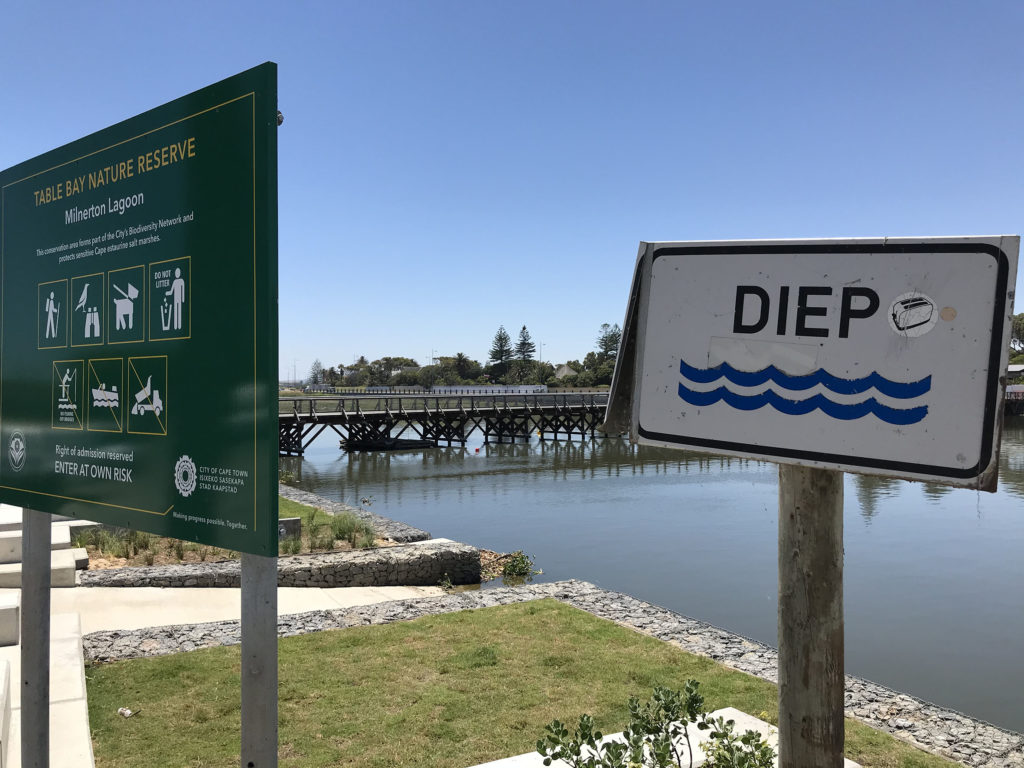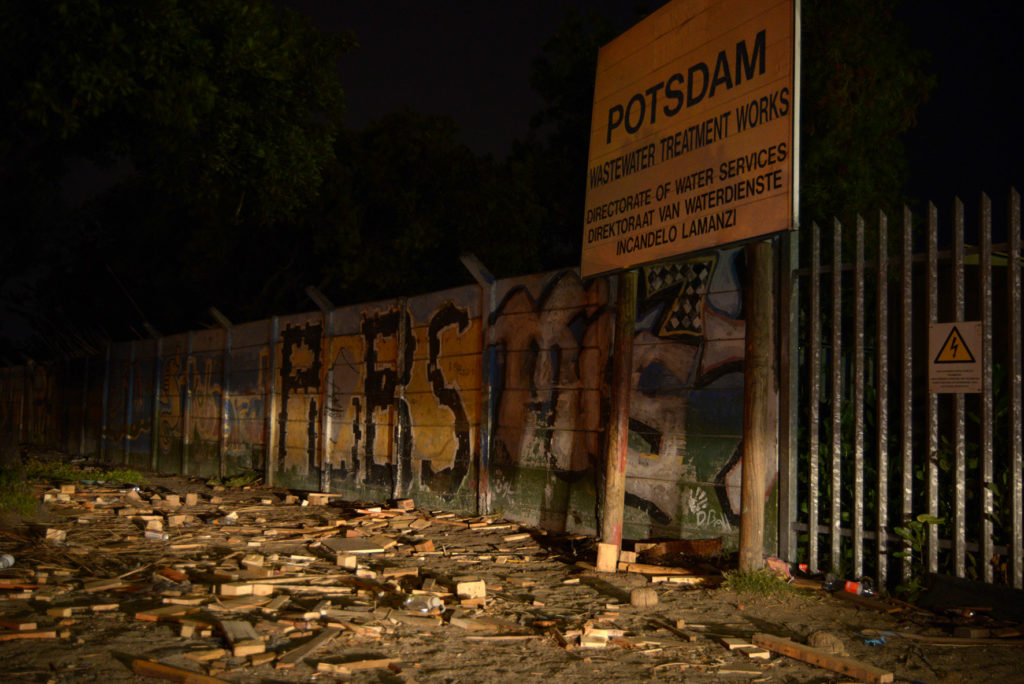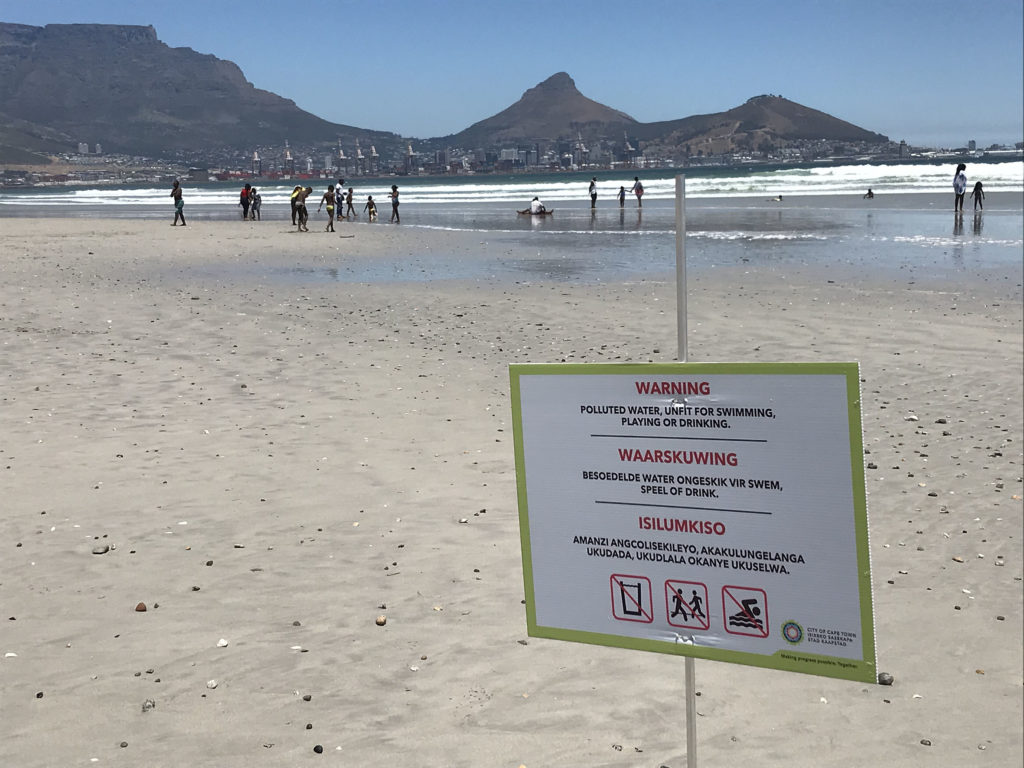
The failure by the Cape Town municipality to maintain a key wastewater treatment plant cost the city a billion litres of valuable drinking water in 2019, as it was emerging from the worst drought in living history.
Problems at the treatment plant resulted in almost three million litres of drinking water being lost each day because industry was unable to utilise “treated” effluent it would normally have used.
The reason is that Cape Town’s main oil refinery, which supplies all the fuel for the Cape Town International Airport, and 95% of the fuel to cars in Cape Town, had to supplement its water requirements from Cape Town’s severely depleted dams.
The refinery normally relies on treated effluent from the Waste Water Treatment Works (WWTW) in the Milnerton area of the city. But last year it was forced to resort to using potable tap water because the “treated” effluent released from the Potsdam facility was so polluted that it could not be run through the plant’s reverse osmosis treatment plant.
Problems at the treatment plant resulted in almost three million litres of drinking water being lost each day
As a result, the refinery’s water use from dams left depleted by severe drought skyrocketed to just over 1.5-billion litres last year, up from an average of just over 500 million litres for each of the previous two years.
The refinery, owned by Astron Energy (formerly Chevron), is one of top ten industrial water users in Cape Town, according to water meter figures obtained from the City following a successful Promotion of Access to Information Act (PAIA) early this year.
Using drinking water to distill fuel

The refinery normally obtains most of the water needed for its industrial processes from the Potsdam WWTW, according to Astron Energy spokesperson Suzanne Pullinger.
She said the refinery can use up to 5,9 million litres of water a day when it is running at full capacity. This water is mostly used for cooling distilled crude oil, and for steam generation to drive pumps and compressors. Most of the water normally used in the refinery’s industrial process is sourced from the Potsdam WWTW, and then put through Astron’s own reverse osmosis plant, with much of it also being recycled.
City of Cape Town statistics, which Astron said aligns with their own, show the refinery used just over 769 million litres of tap water in 2015, dropping to a low of just over 484 million litres in 2017 as Cape Town went through one of its driest rainfall seasons on record.
There was a 44 million litre increase to 528 million litres in 2018, which was the year in which Day Zero – when the authorities said Cape Town’s taps would run dry – was touted. This increase was because water flow from Potsdam WWTW decreased drastically due to households doing their part to save water, resulting in much less water running into the sewer system, said Pullinger.
There have been effluent water quality issues with the Potsdam supply which has meant [the refinery] switching to municipal water usage
Astron Energy spokesperson Suzanne Pullinger
But in 2019 the refinery’s drinking water usage shot up threefold, to just under 1,508 billion litres, before the City’s dam supply had fully recovered. The reason was that Astron had to supplement its water requirements with potable water because of the poor quality of “treated” effluent it normally utilized.
“There have been effluent water quality issues with the Potsdam supply which has meant [the refinery] switching to municipal water usage,” said Pullinger.
She could not comment on the current quality of effluent from Potsdam, as a “prolonged maintenance shutdown” has meant the reverse osmosis plant could not operate and fuel demand had dropped because of the knock-on effect of the Covid-19-related lockdown and resultant restrictions on travel.
Currently, the refinery was “therefore reliant on municipal water to supply basic needs at a much reduced rate of around 12% of normal usage”.
Environmental disaster

Other than industrial and possible agricultural use, the effluent from the Potsdam WWTW is also released into the Diep River that flows through large sections of Cape Town. It eventually flows into the Milnerton Lagoon, which is the Diep River estuary, before flowing out to sea.
Failure to properly treat the inflow of sewage at Potsdam has led to such severe pollution of the river and lagoon that the Environmental Management Inspectorate – known as the Green Scorpions – has ordered the City to clean it up.
The Green Scorpions issued a directive to the City of Cape Town on 21 September, ordering it to remedy the state of the lagoon, which is filled with stagnant, polluted effluent. Failure to comply is a criminal offence.
The directive was issued six months after a pre-directive – essentially a warning – was issued by the Green Scorpions in March. Before that, on 12 February, the City received a letter from the Green Scorpions warning that a pre-directive was imminent if they did not take action and present a remediation plan for the lagoon.
This came after sustained complaints by civic bodies over the state of the water in the estuary, which often smelt of sewage, and the Organisation Undoing Tax Abuse (OUTA) taking up the cause.
In February, prior to the pre-directive and seven days after the Green Scorpions’ initial letter, incoming City Director of Water and Sanitation, Michael Webster, said during a press conference that R11bn had been committed over 10 years to upgrade the waste water treatment works, But, he said, the City recognised “there should have been investments earlier in regard to [the] Diep River”.
This came after sustained complaints by civic bodies over the state of the water in the estuary, which often smelt of sewage
He admitted that the Potsdam disinfection system was in urgent need of repair. A “belt press” was needed to remove solids from the water, and retention ponds needed repair, said Webster.
OUTA senior legal project manager Andrea Korff, stated that a month prior to issuing their final directive, the Green Scorpions had issued a letter stating the City’s interventions as a result of the pre-directive were “only addressing failing systems and infrastructure that should, in any event, be working effectively”.
Cape Town mayoral committee member for water and waste, Xanthea Limberg, said the City has lodged an appeal against the directive “and will continue to implement its action plan to improve water quality in the Diep Rivier and Milnerton Lagoon”.
Provincial government Department of Environmental Affairs and Development Planning Minister Anton Bredell’s spokesperson James-Brent Styan said Bredell, who will have to decide on the merits of the City’s appeal, “endeavors to consider” it within 60 days, “provided all the information and potential queries are resolved”.
Styan said the City lodged its appeal on 20 October.
Limberg said other than Astron, water from Potsdam was used by Sappi. Durbanville farmers, Century City and MyCiTi also use it for irrigation.
This investigation was developed with the support of the Money Trail Project, JournalismFund.eu and the Fund for Investigative Journalism.
